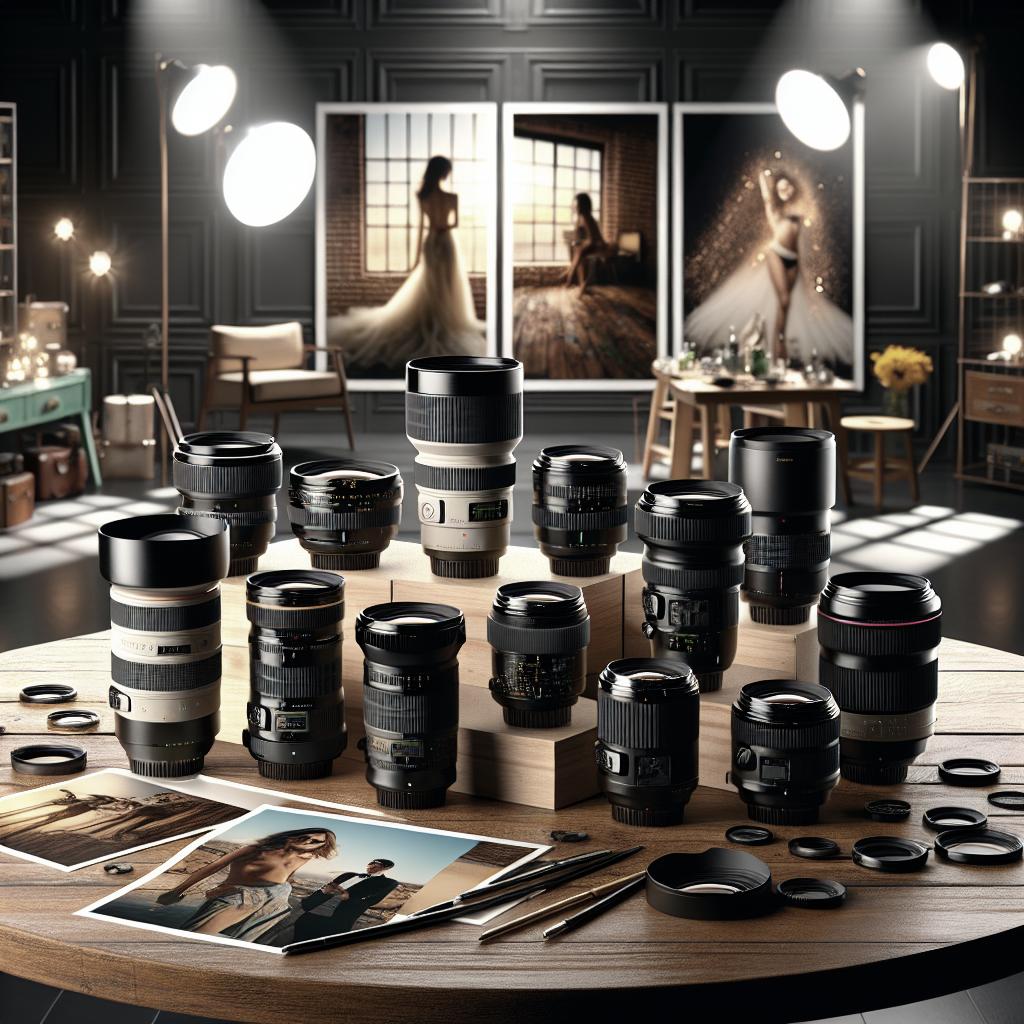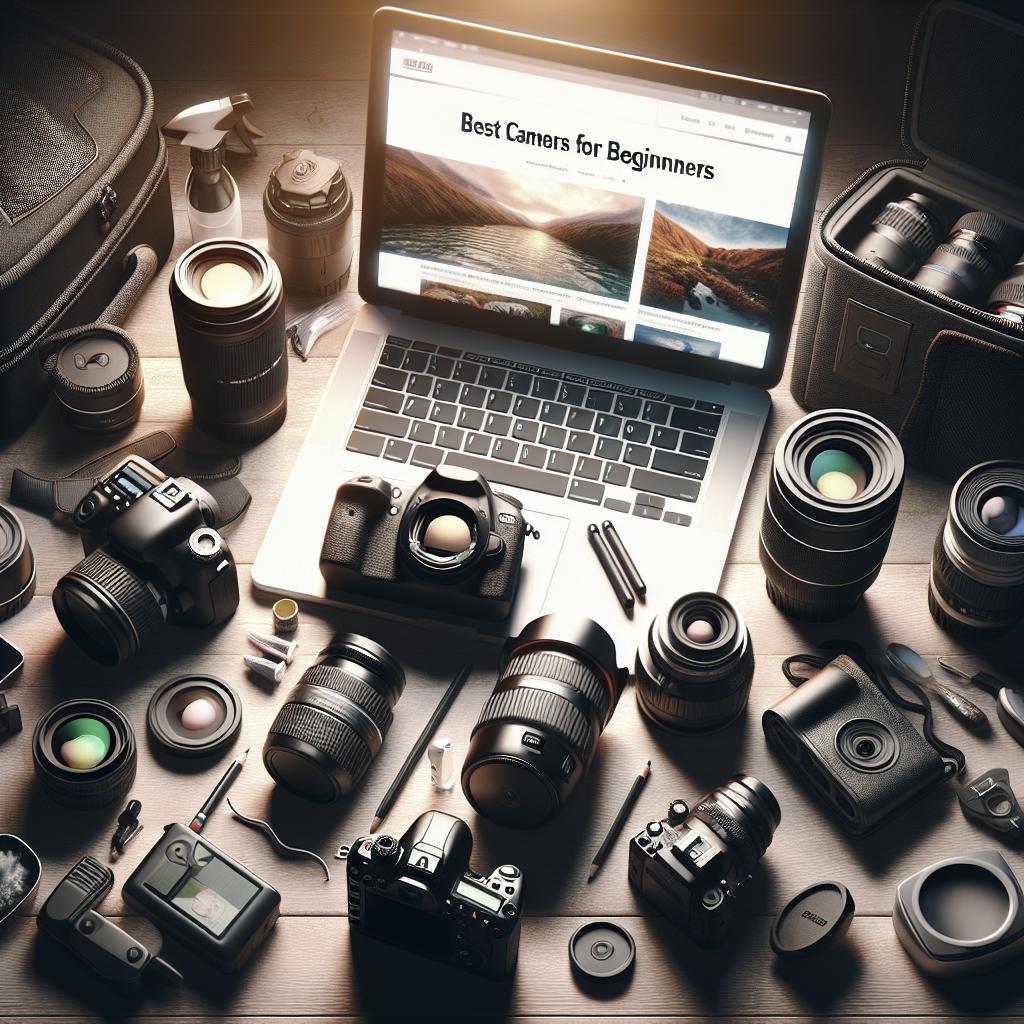Portrait photography is a true art form that requires not only a keen eye but also the right equipment. One of the most crucial components of your gear is the lens you choose. In this blog post, we’ll explore the best lenses for portraits through various focal lengths, their unique characteristics, and what makes them ideal for capturing compelling portraits. From the versatile 35mm to the crisp 85mm and the adaptable 70-200mm zoom, you’ll learn which lenses suit different portrait styles and scenarios. Along the way, we’ll also touch on some key considerations to keep in mind when selecting your perfect portrait lens and dive into some specialized topics like black and white portrait photography. Let’s dive in and discover how you can elevate your portrait photography using the right lenses.
Watch: Shot List — Camera Lenses
Understanding the variety of camera lenses available can dramatically improve your shot list planning. Lenses come in varied focal lengths and are designed to achieve different aesthetics. A shot list, which is essentially a checklist of filmed scenes or photographs you plan to capture, benefits from your understanding of how each lens performs. Whether you need wide-angle shots to immerse viewers in the environment or tight shots to capture intricate details, matching your lenses to your shot list can make all the difference. When creating your shot list, consider whether each scene or portrait benefits from the perspective and depth of field provided by different lenses. For instance, a wider lens will capture more background details, making it ideal for environmental portraits, while a longer focal length may be better suited for isolating the subject against a beautifully blurred background.
Best Type of Lens for Portraits
When it comes to the best type of lens for portrait photography, prime lenses often lead the pack. Known for their fixed focal lengths and wider maximum apertures, prime lenses deliver exceptionally crisp images and shallow depth-of-field effects that are perfect for portraits. Their simplicity also encourages photographers to focus more on the composition and less on zoom settings.
Things To Consider
Selecting the best portrait lens involves several key factors. First, understand what focal length works best for your style. Often, longer focal lengths (85mm and above) provide a flattering perspective and a beautifully blurred background. Secondly, consider the lens’s maximum aperture as it affects the depth of field and low-light performance. Lenses with wider apertures (f/1.2 to f/2.8) offer more creative control over the background blur, making your subject stand out. Another important factor is lens sharpness. Portraits demand high-detail rendering, especially for close-up shots. Look into lens reviews and MTF charts (Modulation Transfer Function) to assess the sharpness. Additionally, think about bokeh quality, which refers to the aesthetic quality of the out-of-focus areas. Good bokeh can make a portrait look more professional and pleasing to the eye.
Good Portrait Lenses
35mm Lenses
The 35mm lens is often considered a versatile choice for environmental portraits. This focal length allows you to capture your subject within the context of a broader scene, adding depth and story to your photographs. Lenses like the Nikon AF-S NIKKOR 35mm f/1.8G or the Canon EF 35mm f/1.4L II USM provide excellent sharpness and wide apertures that deliver stunning background blur. A 35mm lens is particularly useful for street portraiture and event photography, where you want to include more background details. Its ability to perform well in low light, thanks to its wider aperture, makes it a favorite among many portrait photographers. However, due to the wider angle, there’s a slight risk of distortion, which should be managed skillfully by the photographer. Another advantage of 35mm lenses is their compact, lightweight design. The smaller size makes them easier to carry around, allowing for more flexibility and spontaneity in your shoots. The focal length is also ideal for handheld shooting, ensuring that you can capture those fleeting moments with ease.
Best Photos Lens for Portraits in Mid Distance
50mm Lenses
The 50mm lens, often referred to as the “nifty fifty,” is a staple in portrait photography. Offering a perspective similar to human vision, the 50mm lens is great for capturing well-proportioned images without any noticeable distortion. Canon’s EF 50mm f/1.8 STM and Nikon’s 50mm f/1.8G are classic choices that combine affordability with high performance. The 50mm lens is excellent for mid-distance portraits, allowing you to keep a comfortable distance from your subject while still achieving a beautifully blurred background. The wide aperture also makes it an excellent choice for low-light conditions and artistic endeavors that require shallow depth of field. With its practicality and versatility, the 50mm lens is perfect for both beginners and professional photographers. Its relatively low cost compared to other prime lenses makes it an accessible choice for those looking to enhance their portrait photography without breaking the bank.
Perfect Portrait Lenses
85mm Lenses
The 85mm lens is often hailed as the king of portrait lenses, and for good reason. Known for producing flattering perspectives and exquisite background blur, the 85mm focal length is ideal for headshots and close-up portraits. Examples like the Sony FE 85mm f/1.4 GM or the Canon EF 85mm f/1.2L II USM are highly regarded for their exceptional image quality and creamy bokeh. Using an 85mm lens allows you to maintain a comfortable distance from your subject, which can be crucial in making them feel relaxed and natural during the shoot. The lens’s narrow depth of field isolates the subject beautifully from the background, making it the focal point of the image. Another benefit of the 85mm lens is its impressive sharpness and clarity. Even at wide apertures, these lenses deliver razor-sharp details, ensuring that every feature of your subject is captured with precision and artistry.
Best Focal Length for Portraits Zoomed
70-200mm Lenses
For those looking to add versatility to their portrait shoots, the 70-200mm zoom lens is an invaluable tool. This lens covers a broad range of focal lengths, making it suitable for various types of portrait photography. The Canon EF 70-200mm f/2.8L IS III USM and the Nikon AF-S NIKKOR 70-200mm f/2.8E FL ED VR are prime examples of high-quality zoom lenses that excel in portrait photography. The ability to zoom from 70mm to 200mm provides flexibility in framing your shots. At 70mm, the lens can be used for full-body portraits, while 200mm is perfect for tight headshots with stunning background separation. The f/2.8 constant aperture across the zoom range also ensures consistent performance in various lighting conditions. Despite their bulkier size, 70-200mm lenses are favored by many professional photographers for their versatility in both studio and outdoor settings. The optical stabilization in these lenses also helps in minimizing camera shake, ensuring crisp and clear images.
Best Lens for Portrait Photography
What is the Best Lens for Portraits?
Deciding on the best lens for portrait photography ultimately depends on your specific needs and shooting style. If you’re looking for a lens that provides flexibility and a natural perspective, the 50mm might be your best bet. For those who favor headshots and sharp, detailed close-ups, the 85mm lens stands out as a top choice. On the other hand, for photographers seeking versatility and a wide range of focal lengths in one package, the 70-200mm zoom lens is hard to beat. It combines the best of multiple prime lenses into one, allowing you to adapt quickly to different shooting conditions without swapping lenses. Therefore, the “best” portrait lens is subjective and highly dependent on your individual style, preferences, and shooting scenarios. It’s always a good idea to test multiple lenses to see which one feels most comfortable and delivers the results that match your vision.
UP NEXT
Black and White Portrait Photography
The art of black and white portrait photography brings a unique dimension to your portfolio. Focusing on contrasts, texture, and expressions, black and white portraits strip away the distractions of color, allowing the viewer to connect more deeply with the subject. In our next article, we’ll discuss the best techniques and tips for capturing striking black and white portraits that tell a story.
Showcase your vision with elegant shot lists and storyboards.
A well-composed shot list or storyboard is essential for any successful photo shoot. By planning out your shots and understanding how different lenses will achieve your vision, you can create images that are not only technically excellent but also emotionally compelling. Whether you are a beginner or a seasoned professional, developing a clear vision and executing it with the right tools is key to elevating your portrait photography.
| Focal Length | Ideal Use | Example Lenses |
|---|---|---|
| 35mm | Environmental portraits, street photography | Nikon AF-S NIKKOR 35mm f/1.8G, Canon EF 35mm f/1.4L II USM |
| 50mm | Mid-distance portraits, versatile use | Canon EF 50mm f/1.8 STM, Nikon 50mm f/1.8G |
| 85mm | Headshots, close-up portraits | Sony FE 85mm f/1.4 GM, Canon EF 85mm f/1.2L II USM |
| 70-200mm | Zoomed portraits, versatility in framing | Canon EF 70-200mm f/2.8L IS III USM, Nikon AF-S NIKKOR 70-200mm f/2.8E FL ED VR |


